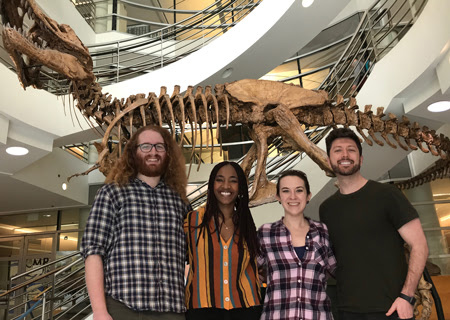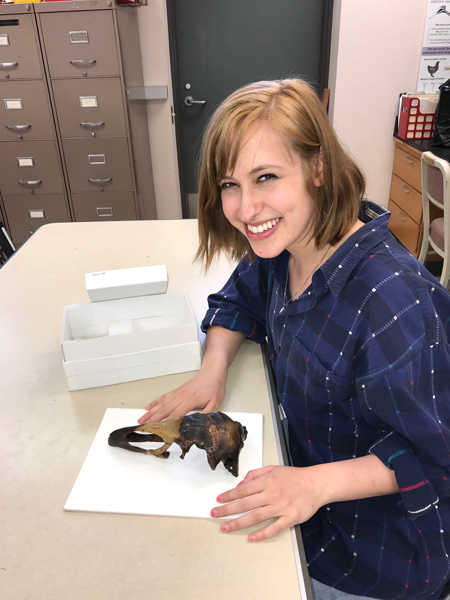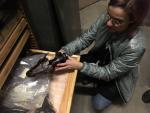Faculty
Full: You can’t squash this roach-inspired robot
Submitted by Krystin Ventura on Wed, 07/31/2019 - 19:36New research from IB Professor Robert Full and scientists from the Department of Engineering and Tsinghua University in China have created a soft robot nearly as the cockroaches that inspired its design. At 20 to 65 milligrams, these robots are able to carry loads 6 times their weight and withstand the pressure of a 60-kilogram human step.
In the future, these robust, small-scale robots could be useful for search and rescue missions and for fitting into tight, dangerous spaces.
Koskella: When it comes to climate change, don’t forget the microbes
Submitted by Krystin Ventura on Tue, 06/18/2019 - 18:31A new consensus statement published in Nature Reviews Microbiology raises awareness of the alarming consequences of global climate change on microbes, which have critical functions in animal and human health, agriculture, the global food web and industry.
Are There Dinosaur Bones in UC Berkeley's Campanile?
Submitted by rhkayen on Fri, 03/08/2019 - 10:11“It’s always dinosaur bones,” says Pat Holroyd, feigning exasperation. She handles Vertebrate Collections for the UC Museum of Paleontology. Leslea Hlusko, a professor in the department of integrative biology, interjects: “But it’s actually better ... dire wolves!”
Researchers Work to Reverse Cognitive Decline as People Age
Submitted by rhkayen on Tue, 03/05/2019 - 10:02Daniela Kaufer, professor of integrative biology at the University of California, Berkeley, shared progress toward addressing another cause of cognitive decline: dysfunction of the blood-brain barrier. The blood-brain barrier ordinarily protects the brain, but Kaufer’s work shows that when the barrier falters, itself a sign of aging, proteins can enter brain cells called astrocytes, which causes inflammation in the brain and leads to cognitive impairments.
UC Berkeley study reveals hummingbirds prioritize fighting over feeding
Submitted by rhkayen on Wed, 01/23/2019 - 08:08According to lead scientist on the project and Miller Postdoctoral Fellow at UC Berkeley Alejandro Rico-Guevara, physical traits observed in male hummingbirds in the tropics of Central and South America could not be explained through adaptations to feeding strategies.
IB Students in the Lab and Field
Submitted by mjalbe on Thu, 01/10/2019 - 13:04We thought you might like to see a few photos of our work in the field, our museums, and our labs...
IB graduate students Erik Sathe, Joyce Chery, Sara ElShafie and Aaron Pomerantz.

Undergraduate Julia Anderson displays the subject of her senior research project: the skull of a giant vulture-like bird from the La Brea Tar Pits, which she’s analyzing and describing.

The Sounds That Haunted U.S. Diplomats in Cuba? Lovelorn Crickets, Scientists Say
Submitted by rhkayen on Tue, 01/08/2019 - 08:19Alexander Stubbs of the University of California, Berkeley, and Fernando Montealegre-Z of the University of Lincoln in England studied a recording of the sounds made by diplomats and published by The Associated Press.
Feisty hummingbirds prioritize fencing over feeding
Submitted by rhkayen on Wed, 01/02/2019 - 11:45Using high-speed video cameras, the researchers have for the first time captured hummingbird fencing and feeding strategies in slow motion to document the various ways the birds use their bills to fight and the trade-offs they accept when choosing fighting over feeding prowess.
Congratulations to Daniela Kaufer and Bill Jagust, The 2018 Radical Ideas in Brain Science Challenge winners
Submitted by rhkayen on Thu, 12/20/2018 - 09:43From the Helen Wills Neuroscience Institute






